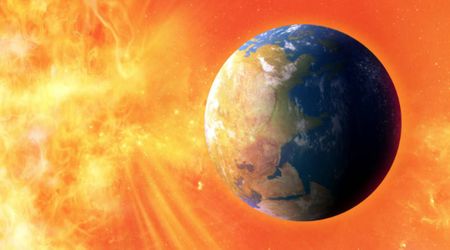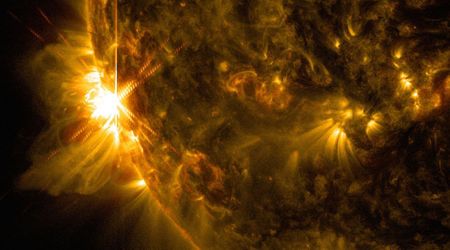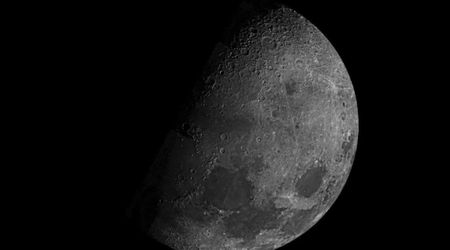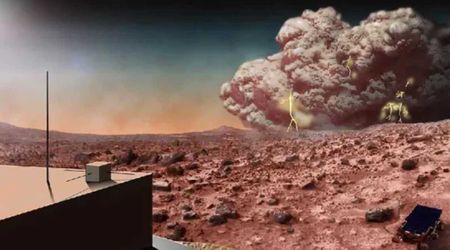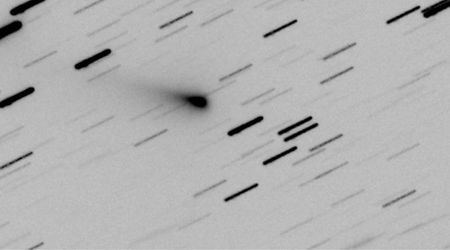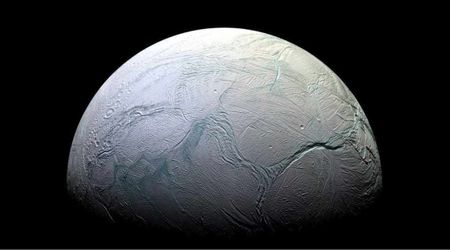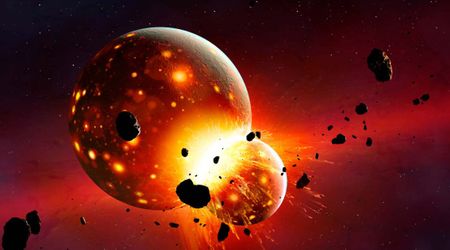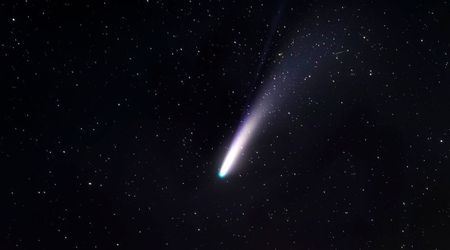The Largest Moons in Our Solar System

While Earth's moon has been our solitary, loyal companion, inspiring tales and scientific discoveries, it's easy to wonder how it measures up against the backdrop of our neighbors' satellites.
Though not all planets in our solar system boast a moon's companionship, those that do reveal a fascinating array of these cosmic entities. From moons with subterranean oceans and volcanic infernos to those harboring potential for life or painting scars of the solar system's violent history, each tells a unique cosmic story.
So, how does our beloved moon compare in the grander scale? And which colossal satellites have earned their spot in the top ten?
However, the number of discovered moons has continued to rise. NASA JPL Solar System Dynamics lists 290 moons: one moon for Earth; two for Mars; 95 at Jupiter; 146 at Saturn; 27 at Uranus; 14 at Neptune; and five for dwarf planet Pluto but the more official and recognized count is a little lower.
Jupiter and Saturn are often neck and neck for the most number of officially recognized moons in the solar system. Many of these are unnamed and will likely never be named as the International Astronomical Union (IAU) will no longer name the smallest moons unless they're of “significant” scientific interest.
So, what are the ten biggest? Does our moon make the cut? Let's find out!
#10: Oberon (946 miles/ 1,523 km)
Oberon is the second-largest moon of Uranus and was discovered on January 11, 1787 by William Hershel. Fun fact: all of Uranus's moons are named after literary characters, primarily Shakespearean characters and a few from the works of Alexander Pope. Oberon is the king of the fairies in “A Midsummer Night's Dream”.
When Voyager 2 passed by during its flyby of Uranus in January 1986, we were able to obtain many more details about this moon, including that it is heavily cratered and composed of roughly half ice and half rock with at least one large mountain at 6 km above the surface.
It is the tenth largest moon in the solar system at 1,523 km (946 miles) in diameter.

#9: Rhea (950 miles/ 1,529 km)
As the second largest moon of Saturn, Rhea is a cold, airless body tidally locked in phase with Saturn just as the moon is tidally locked with the Earth. Its orbit is only 4.5 Earth days. Its high reflectivity suggests a large composition of water ice.
Rhea was discovered by Giovanni Cassini on December 23rd, 1672. In 2014, Rhea made the news when the Cassini spacecraft found evidence of rings, the first time rings have been found around a moon.
Rhea is only slightly bigger than Oberon at 1,529 km (950 miles) in diameter, making it the ninth biggest in the solar system.

#8: Titania (980 miles/ 1,578 km)
The largest moon of Uranus is named after the Queen of the fairies, the co-ruler and counterpart of Oberon. Like Oberon, it took Voyager 2’s flyby almost 200 years after their discovery by Herschel on the same night to reveal the moon in more detail such as signs that it was geologically active based on a prominent system of fault valleys near the terminator (shadow line). There is also evidence of highly reflective material along the Sun facing valley walls which may be frost.
At 1,578 km (980 miles) in diameter, Titania is the eighth-largest moon in the solar system.

#7: Triton (1,682 miles/ 2,707 km)
The largest of Neptune's 13 moons is an unusual moon since it is the only large moon in our solar system with a retrograde orbit, meaning it orbits in the opposite direction of its planet's rotation. Evidence indicates Triton is a Kuiper Belt Object that was captured by Netpune's gravity millions of years ago and it shares many similarities with Pluto. While it was discovered on October 10, 1846, by William Lassell (just 17 days after Neptune was discovered), much of what we know about Triton is from Voyager 2's flyby.
While it is tidally locked with Neptune, like our moon, both polar regions take turns facing the Sun because of its unusual orbital inclination. It also has a thin atmosphere composed mainly of nitrogen with small amounts of methane, likely originating from Triton's volcanic activity. It is one of only four bodies in the solar system that are known to be volcanically active today (Io, Venus, and Earth are the others). As one of the coolest bodies in our solar system, it is so cold that most of its nitrogen is condensed as frost, which reflects 70% of the sunlight that hits it.
At 2,707 km (1,682 miles) in diameter, Triton is the seventh-largest moon in our solar system.
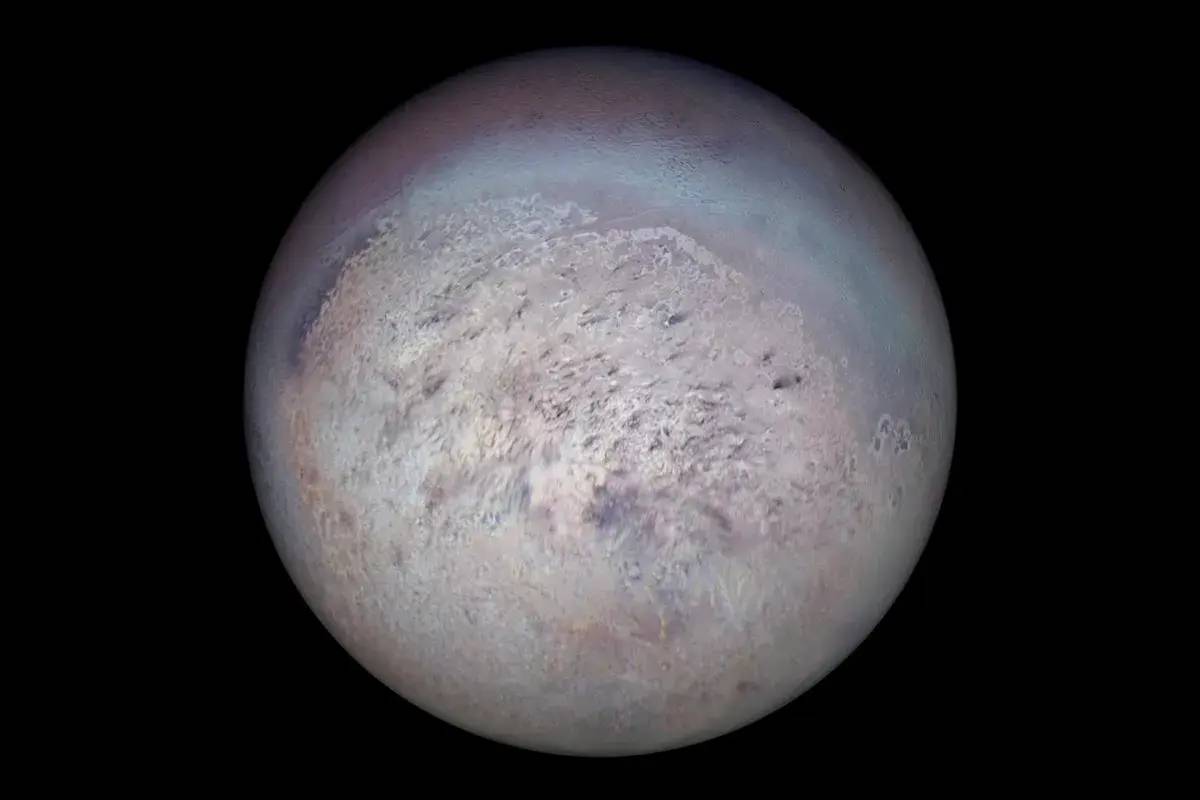
Image credits: NASA/JPL
#6: Europa (1,940 miles/ 3,122 km)
Europa was one of four moons discovered by Galileo Galilei in January 1610, the first time moons besides our own were detected. As one of the major moons of Jupiter, Europa may be the most promising place in our solar system to find current environments suitable for life beyond Earth. Evidence indicates that underneath the icy surface is a salty-water ocean that may contain twice as much water as all of Earth's oceans.
The icy surface (probably 10-15 miles/ 15-25 km thick) is crisscrossed with long, linear fractures, cracks, ridges, and bands. The ocean underneath this icy shell is estimated at 40-100 miles (60-150 km) thick. Evidence also indicates a rocky mantle and iron core like Earth. Due to its smooth surface with a small number of observable craters, the surface is estimated to be no more than 40-90 million years old, which is relatively young in geologic terms (even nearby Callisto's surface is about a few billion years old).
At approximately 1,940 miles/ 3,122 km, Europa is the sixth-largest moon in our solar system.

#5: The Moon/ Luna (2,159 miles/ 3,475 km)
Earth's moon was the only one we knew about until 1610 and therefore is typically called simply the moon or Luna. It is the only astronomical body beyond Earth where humans have set foot. The moon is the brightest and largest object in the night sky and impacts our planet in a number of ways including moderating Earth's wobble on its axis (leading to a relatively stable climate) and causing tides.
At 2,159 miles/ 3,475 km in diameter, the moon is the fifth largest moon in the solar system. If Earth were the size of a nickel, the Moon would be about as big as a coffee bean. Mercury is only about 40% bigger. In comparison, Europa is 90% the size of the Moon, and the moon is about 30% bigger than Triton, about 2.2 times the size of Titania, and 2.3 times the size of Oberon or Rhea.
While it is only the fifth largest moon in the solar system, our moon does carry the mantle for the largest moon in relation to its planet at about one-fourth the size of Earth. Imagine if the largest moon of Jupiter were a quarter its size. (You can fit 11 Earths the massive king of the planets!)

#4: Io: (2,264 miles/ 3,643 km)
Discovered with the other Galilean moons in 1610, Io is the third-largest moon of Jupiter and the most volcanically active world in the solar system with hundreds of active volcanoes. These volcanoes are due to the gravitational pulls of both Jupiter and the smaller but precisely timed pulls from two nearby moons– Europa and Ganymede– creating a tug-of-war effect on the planet, literally pulling it apart, bulging it in and out by as much as 330 feet (100 meters). In comparison, Earth's high and low tides only have a difference of about 60 feet (18 meters) and that is with water, not solid ground like on Io.
The active volcanoes and Io's unique coloring has earned it the nickname “the Pizza Moon”.
The moon is also an electric generator as it cuts across Jupiter's powerful magnetic lines, developing up to 400,000 volts across its surface and creating an electric current of 3 million amperes.
At 2,264 miles/ 3,643 km in diameter, Io is the fourth largest moon in the solar system.

#3: Callisto (2,995 miles/ 4,820 km)
This second-largest moon of Jupiter and the third-largest moon in our solar system is about the same size as Mercury and was discovered with the other Galilean moons in 1610. Despite being previously described as an “ugly duckling moon” and a boring “hunk of rock and ice”, its crater-covered surface which didn't seem to have much going on was actually hiding a secret. NASA's Galileo spacecraft in the 1990s revealed it may have a salty ocean underneath, meaning it could possibly harbor life.
At 2,995 miles/ 4,820 km in diameter and about 25% larger than our moon, Callisto is the third largest moon in the solar system.

Image credits: NASA/JPL-Caltech/Kevin M. Gill
#2: Titan (3,200 miles/ 5,150 km)
Discovered on March 25, 1655, Saturn's largest moon is a fascinating world. It is the only moon with a substantial atmosphere. It is the only place in the solar system besides Earth known to have liquids in the form of rivers, lakes, and seas on its surface.
Titan's atmosphere is mostly made of nitrogen (like Earth's!) but with 50% higher surface pressure. It has a full “water cycle” without the water. It has clouds, rain, rivers, lakes, and seas of liquid hydrocarbons like methane and ethane with the largest seas being hundreds of feet deep and hundreds of miles wide.
Beneath a thick crust of water ice is more liquid, an ocean primarily of water rather than methane, making this subsurface water a possible place to harbor life as we know it while its surface lakes and seas could harbor life utilizing a very different chemistry than our own.
At larger than Mercury and only barely smaller (2%) than the biggest contender on this list, Titan takes second place at 3,200 miles/ 5,150 km in diameter.

Image credits: NASA
#1: Ganymede (3,275 miles/ 5,270 km)
The largest moon in our solar system is also the only moon with its own magnetic field, which causes auroras like our Northern and Southern Lights in its north and south poles. It has large, bright regions of ridges and grooves that cut across older, darker regions which indicate that the moon experienced dramatic tectonic shifts in the distant past. There is also strong evidence of an underground ocean.
It was discovered on January 7, 1610, along with the three other Jovian “Galilean” moons (Callisto, Io, and Europa). These discoveries eventually led to the heliocentric model of our solar system in which the planets orbit the Sun as opposed to the previously held geocentric belief that the solar system revolved around the Earth.
At 3,275 miles/ 5,270 km in diameter, making it larger than Mercury and almost 50% larger than our moon, Ganymede is the largest moon in our solar system.

Image Credits: NASA / JPL-Caltech / Emily Lakdawalla
Explore the moons and the rest of the solar system
NASA has provided the public with access to real-time simulations of objects in the solar system in its Eyes on the Solar System online application. Check it out to explore the moons, planets, dwarf planets, asteroids, comets, and spacecraft in our solar system along with featured stories and events such as the recent 2023 Annular Solar Eclipse, Voyager's Grand Tour, and Discovery at Enceladus from Cassini. You can also explore our moon in great detail on NASA's Earth's Moon's interactive module.
Conclusion/ What Else is Out There
As of today there are 150+ moons discovered in the solar system, in various levels of official nature. While our moon has continued to impact our daily lives for thousands of years, there are many others. While it is the largest moon in relation to its planet, it is only one of the ten largest moons, even though it is a respectable fifth. Ganymede takes the cake as our largest moon and a fascinating world of its own.
Scientists are continuing to explore our universe and solar system, better understanding our place in space. We are also finding that some of the best potential sites for life now or in the future for life like our own and life very different than us are moons (many on this list), not planets in our solar system. All in all, these 10 moons and others are inspiring us to continue exploring space.
